The Xavier University – Ateneo de Cagayan, also known simply as the Ateneo de Cagayan or Xavier is a private, Catholic, coeducational, basic and higher education institution. It is operated by the Philippine Province of the Society of Jesus in Cagayan de Oro, Misamis Oriental, Philippines. Founded in 1933 as the Ateneo de Cagayan, it became the first higher education institution in Mindanao to receive a university status a year before its sister school Ateneo de Manila. It was given its present name in honor of the Jesuit missionary St. Francis Xavier.
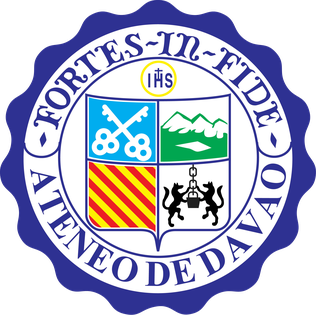
Ateneo de Davao University is a private Catholic basic and higher education institution run by the Philippine Province of the Society of Jesus in Davao City, Davao del Sur, Philippines. It was established in 1948 when the Jesuits took over the administration of the diocesan school, St. Peter's Parochial School. The Jesuits renamed the school to "Ateneo de Davao" after taking control. At that time, the Jesuits named all the schools that they were opening "Ateneo." Ateneo de Davao is the seventh school in the country to be named as Ateneo by the Jesuits. The university has five undergraduate schools, namely the School of Arts and Sciences, School of Business and Governance, School of Engineering and Architecture, School of Education and the School of Nursing. The graduate programs are under these units as well. The College of Law is a separate unit within the university. The university also runs a grade school and high school, both Junior High and Senior High.

The University of San Carlos is a private, Catholic, research, coeducational basic and higher education institution administered by the Philippine Southern Province of the Society of the Divine Word missionaries in Cebu City, Philippines, since 1935. It offers basic education and higher education. Founded originally in 1595 as Colegio de San Ildefonso, it later became the Colegio-Seminario de San Carlos in 1783 and finally obtained university charter in 1948.

Lyceum of the Philippines University also referred to by its acronym LPU is a private, non-sectarian, coeducational higher education institution located at intramuros in the City of Manila, Philippines. It was founded in 1952 by José P. Laurel, who was the third president of the Republic of the Philippines.

The University of the East, also known as UE, is a private university located in Manila, Philippines. Founded in 1946, business tycoon Lucio Tan acquired the university in 1990. UE was once labeled as the "largest university in Asia" when its enrollment in the past reached over 65,000 students.

Mapúa University, also known simply as Mapúa or MU, is a private research-oriented non-sectarian university located in Metro Manila, Philippines. The university was founded in 1925 by the first registered Filipino architect, Tomás Mapúa, a graduate of Cornell University in New York, US. In 2000, the university was acquired by the Yuchengco Group of Companies.
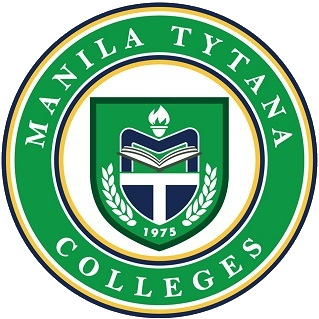
Manila Tytana Colleges (MTC), or just simply Tytana, the educational arm of the Metrobank group, is a private college in Pasay, Philippines..

The Iligan Institute of Technology, commonly referred to as, is a public coeducational institution of higher learning and research university located in Iligan City, Philippines, charted in 1968 by Republic Act 5363 and integrated as the first autonomous unit of the Mindanao State University System in 1975.
The University of Southern Philippines Foundation (USPF) is a private, non-sectarian university in Cebu City, Philippines.

The University of Science and Technology of Southern Philippines is a state university system in the Philippines established on August 16, 2016, by virtue of Republic Act 10919 through the amalgamation of the Mindanao University of Science and Technology (MUST) in Cagayan de Oro and the Misamis Oriental State College of Agriculture and Technology (MOSCAT) in Claveria, Misamis Oriental. Both campuses are located in Northern Mindanao, considered the Gateway to Mindanao, which offers a strategic locational advantage for the institution to train and develop students from all the other regions of Mindanao.

The Liceo de Cagayan University (LDCU) is a private non-sectarian basic and higher education institution in Cagayan de Oro, Philippines. It was founded in 1955 by Rodolfo N. Pelaez of Cagayan de Oro and his wife Elsa P. Pelaez of Cebu City.
Misamis University is a privately owned, non-sectarian, non-profit educational institution founded by Dr. Hilarion Feliciano and Doña Maria Mercado Feliciano in 1929. Misamis University is currently the only autonomous university granted an ISO 9001:2015 Management System Certified granted by Det Norske Veritas-Germanischer Lloyd Business Assurance by the Commission on Higher Education (CHED) in Northwestern Mindanao, and awarded by te Philippine Association of Colleges and Universities Commission on Accreditation as the Most Number of Accredited Programs in Region X.
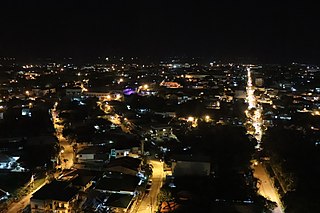
Metro Davao, officially Metropolitan Davao, is a metropolitan area in Mindanao, Philippines. It includes the cities of Davao, Digos, Mati, Panabo, Samal and Tagum and spanned parts of all five provinces of the Davao Region. Metro Davao is one of three metropolitan areas in the Philippines. It is administered by the Metropolitan Davao Development Authority. It is the largest metropolitan region by land area and the second most populous in the Philippines.

Universidad de Dagupan is a private non-sectarian college located in Dagupan, Philippines.

The Far Eastern University – Institute of Accounts, Business, and Finance, or simply IABF, is the academic institute offering accountancy and business programs of the Far Eastern University. It is regarded as the oldest institute of the university, established prior to the creation of FEU.

The Davao del Norte State College is a public college in New Visayas, Panabo City, Philippines which provides instruction and progressive leadership in education, engineering, arts, sciences, fisheries, and other fields.
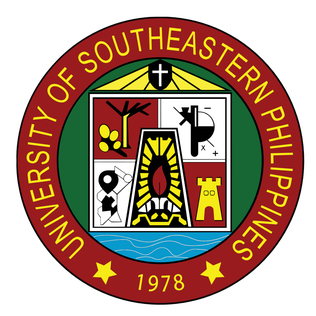
The University of Southeastern Philippines is a public, research, coeducational, regional state university based in Davao City, Davao del Sur, Philippines. Founded on December 15, 1978, the university is an integration of four state educational institutions: Mindanao State University-Davao, the University of the Philippines-Master of Management Program in Davao, the Davao School of Arts and Trades, and the Davao National Regional Agricultural School. It was the first state university in Davao Region.
Higher education in the Philippines is offered through various degree programs by colleges and universities—also known as higher education institutions (HEIs). These HEIs are administered and regulated by the Commission on Higher Education (CHED).
Davao Doctors College (DDC) is a private and non-sectarian academic institution in Davao City, Philippines. College was founded in 1975 and supports House of Hopes.
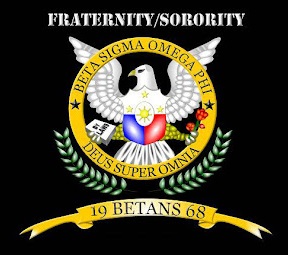
Beta Sigma Omega Phi is a service fraternity and sorority founded at University of Bohol on October 10, 1968. This was organized by Frank Paz Jr., Frederick Loor, and Remy Galbizo. Their aims were to foster lifetime brotherhood and sisterhood and to build noble leaders and better citizens. Members are encouraged to promote the welfare of students and to work for better and greater involvement in the affairs of the school as well as in the community. The organization facilitates a variety of community civic involvement, and services like tree planting, feeding programs, bloodletting, operation tuli, and lately the Brigada Eskwela. Betans 1968 have established 72 collegiate chapters throughout Philippines; most of these are on the island of Mindanao.


















